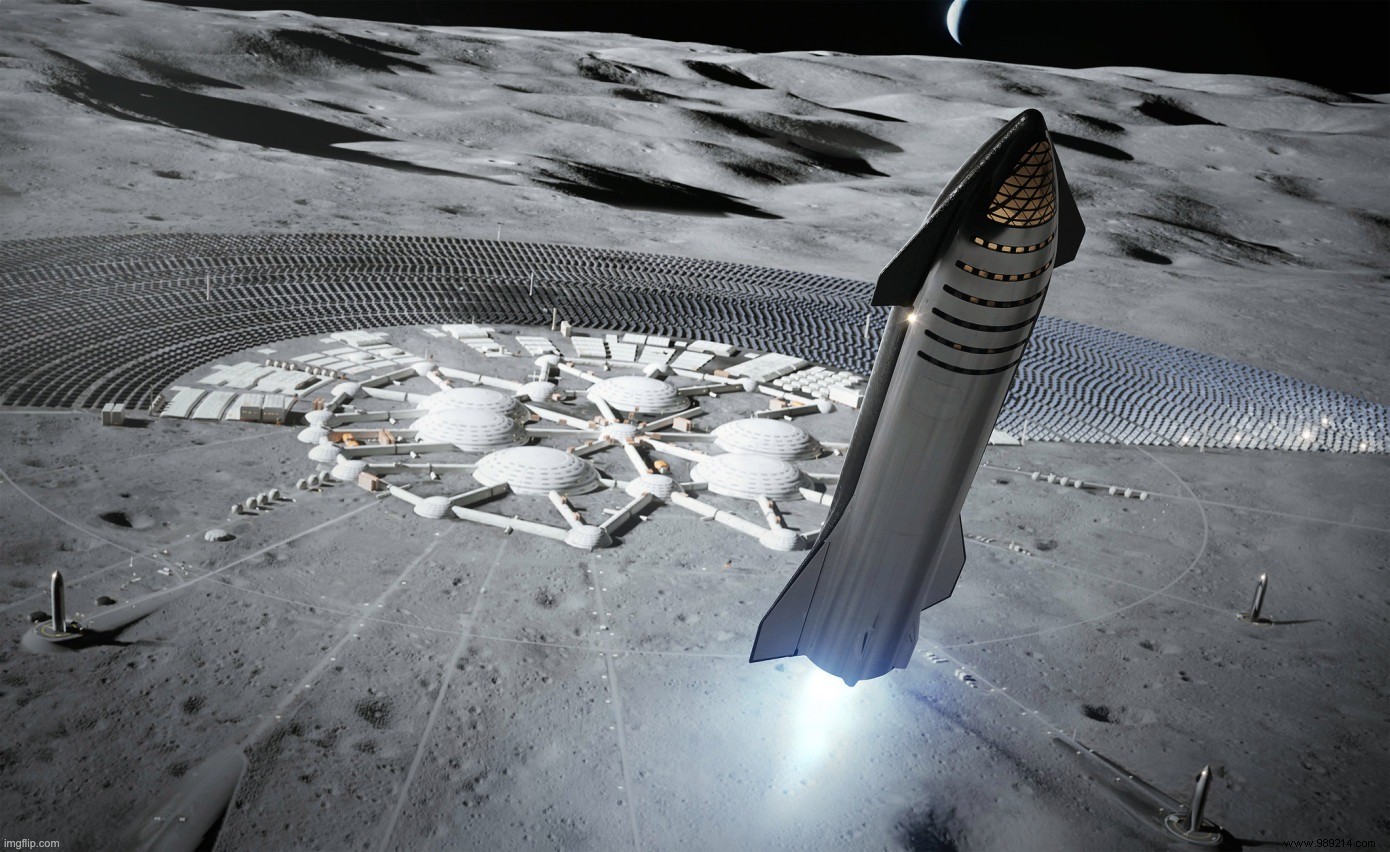With SpaceX's Starship in the lunar equation, NASA and its partners can more confidently envision a permanent future on the Moon. Then will come the planet Mars.
The last decade has been a bit frustrating for NASA, which, following the retirement of the space shuttle in 2011, had no way to send its astronauts into space. The frustration was all the greater as, at the instigation of the Trump Administration, the United States was asked to return to the Moon to stay there. However, things are starting to change.
NASA has indeed made significant progress on the side of its super-heavy launcher SLS and its Orion capsule. After a decade of development and billions invested, the two structures should perform a test flight in a few months as part of the Artemis I mission. But above all, the agency has set its sights on SpaceX as its sole supplier for its future lunar landers.
The amount of the contract that links NASA to SpaceX is only 2.89 billion dollars . This agreement includes Starship development costs, an uncrewed demonstration test and a crewed landing as early as 2024.
Note that, for the time being, the contract is temporarily suspended due to complaints filed by Blue Origin and Dynetics, who would also be competing for this agreement. The GAO, the equivalent of the French Court of Auditors in the United States, must render its decision by early August 2021.
That being said, a few days after the disclosure of this contract, NASA's Inspector General released a report including the landing system costs initially planned by NASA for its next human landing on the moon:17.3 billion dollars.
So with the price of the contract with SpaceX, NASA will be able to save over $14 billion . This means that the agency will now be able to start focusing on what it could accomplish on the Moon, having the budget necessary to target a landing as early as 2024, but also to develop a real permanent lunar program without the need for systematically go through Congress.
We are only at the beginning. The Starship program is still in the test phase in Texas and there is no guarantee that the vehicle will be operational from 2023-2024. However, it is only when you solve the "transportation problem" that you can truly focus on what could be done once there. And with the Starship, the possibilities are endless.

In addition to the cost savings inherent in the development of the ship, it will be able to deliver a phenomenal amount of payloads on the lunar soil. After refueling in low orbit, such a cargo-only craft could indeed deposit more than fifty tons on the surface as part of a round-trip mission, according to estimates by physicist Casey Handmer. An exhausting ship, which lands on the Moon and stays there, could in turn deliver more than two hundred tons of cargo to the Moon.
It is difficult to apprehend such cargo. To better understand ourselves, we could for example consider the lunar module used within the framework of the Apollo program. In a "freight" configuration only, it was estimated that this vehicle could bring about five tons of payload to the lunar surface. Thus, Starship would have the capacity to bring back more than forty times more material on our satellite per mission. This is the key to sustainability.
If the Starship program keeps its promises, NASA would no longer have to consider brief incursions on the Moon, but could build one or more bases very quickly and at lower cost, ultimately allowing permanent human settlement.